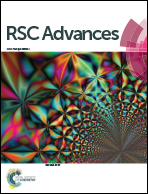Application of optical imaging technology on the in vitro assessment of mast cell degranulation
Abstract
Mast cells are major effector cells in both IgE-mediated immune responses and anaphylactoid reactions. During the process of anaphylaxis, mast cells synthesize and release inflammatory mediators from granules that induce anaphylactic symptoms. Currently, in vitro detection methods for mast cell degranulation include the colorimetric assay and morphological observations. These conventional methods are stable but have their own limitations in dynamic biological information being lost, cumbersome to operate and result with judgmental bias. To overcome these disadvantages, we developed a new approach to observe the dynamic process of degranulation in anaphylaxis. In brief, a RBL-2H3 cell line transfected with CD63-GFP (RBL-GFP) on secretory granules was established. After activated by compound 48/80 (C48/80), the degranulation process was observed by confocal laser scanning microscope (CLSM) within 10 min, CD63-GFP-labeled granules were traced and the maximum velocity was calculated by Imaris image processing and analysis software. Conventional colorimetric assay (β-HEX assay) and the morphological imaging method (Scanning Electron Microscopy, SEM) were selected as control methods. The results showed that the granules in RBL-2H3 cells moved faster towards the plasma membrane and the number of intracellular granules significantly reduced (P < 0.05) after the addition of C48/80. The maximum velocity of granules was about 0.17 μm s−1. Furthermore, morphological changes were observed in cell and nuclear volume and pseudopodia protrusion in comparison with before treatment. Therefore, this approach is a sensitive, easy to handle and low cost method, which could be applied to visualize the dynamic process of mast cell degranulation in vitro.


 Please wait while we load your content...
Please wait while we load your content...